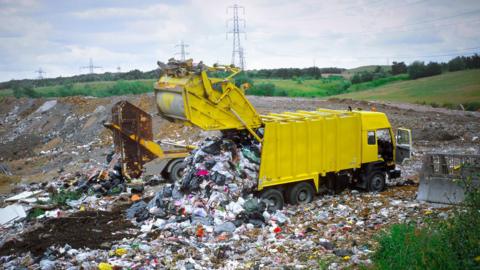The UK government said local authorities had a statutory duty to inspect potentially contaminated sites, require remediation and maintain a public register of remediated land.
"Any risk to public health from contaminated land is a serious matter," a spokesperson from the Department for Environment, Food and Rural Affairs said.
They also asked the Environment Agency to produce a new state of contaminated land report to provide the "best possible baseline of data to measure future policies related to contaminated land against".
The bodies that represent councils in Wales and England both said a lack of cash meant they could not fulfil their duty.
The Welsh Local Government Association said while Wales' 22 councils took their responsibility to check sites "seriously", progress was "increasingly constrained by a lack of dedicated funding and specialist resources".
England's Local Government Association said: "Without adequate funding, councils will continue to struggle to provide crucial services - with devastating consequences for those who rely on them."


